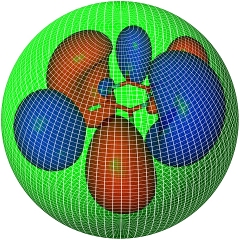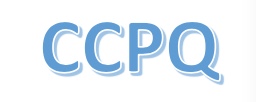CCPQ Software Projects: links
Here we present a set of links to program sources maintained by, but not restricted to, members of CCPQ. These links will be added to over the course of the network. While the links and code packages are mainly either new to CCPQ (RMAT_REACT) or historically related to CCP2 interests, as of January 2019 the Quantics and the MOLSCAT packages below, and some links from ExoMol, are related to earlier CCP6 codes. For additional CCP6 areas and related (legacy) codes please also see the frozen archive CCP6 (we do not guarantee the validity of the CCP6 site links: a fully amalgamated set of links will appear in the future). A large number of member-authored programs are published in the Computer Physics Communications Library. Various code packages have also previously been maintained on CCPForge and are now on various GitLab and GitHub sites (see below). We make no recommendation as to which codes are the “best” to use. Those in CPC are well documented, but frozen. Those maintained elsewhere are meant to be (close to) the current working versions used by the groups. Hence, in some cases little or no documentation may be available.
We present links to recent software-related publications here.
Links to code packages based on R-matrix theory used within the UK-AMOR HEC consortium may be found on the UK-AMOR website.
Current CCPQ member packages include:
Tensor Network Theory
The Tensor Network Theory (TNT) library developed at the University of Oxford contains optimised tensor operations for use in TNT-based algorithms for the simulation of strongly correlated quantum systems.
Contacts: Dieter Jaksch, Michael Lubasch, Sarah Al-Assam and Stephen Clark
Quantics
Quantics implements the powerful multi-configurational time-dependent Hartree algorithm for molecular wavepacket studies of fundamental molecular reactivity.
Contact: Graham Worth
ExoMol and RmatReact
The ExoMol project calculates molecular line lists that can be used for spectral characterisation and simulation, and as input to atmospheric models of exoplanets, brown dwarfs and cool stars, and other models including those for combustion and sunspots. The project code base and associated projects may be found on the ExoMol Software page. This code base will also be used to produce and develop a new package RmatReact for ultracold molecular collisions.
Contacts: Jonathan Tennyson and Sergey Yurchenko
The UK Molecular R-matrix Group and the GitLab UK-AMOR site UKRmol for the UKRmol/UKRmol(+) packages. Public releases UKRMol+U:KRMol-in and UKRMol+:UKRMol-out are downloadable from zenodo.

Contacts: Jonathan Tennyson and Dr Jimena Gorfinkiel
Quantemol: a full user interface for electron-molecule scattering
Contact: Jonathan Tennyson
Atomic physics: structure, collisions and interactions with laser pulses:
The Queen’s University, Belfast
Atomic Structure and Properties (CIV3)
Collision Codes (RMATRX1, RMATRX NX, GRACE, 2DRMP)
Laser Atom Codes (HELIUM, R-Matrix Floquet, TDRM, RMT)
Theoretical Methods (WEIGHTS).
For general information, contact the Centre for Theoretical Atomic, Molecular and Optical Physics
The RMATRIX1 parallel R-matrix codes for electron-ion (atom) collisions and photoionization (LS/Breit-Pauli and Dirac-Fock codes) are managed by Connor.Ballance.
The RMT package for atoms and molecules in intense, arbitrarily polarised light fields may be found on the GitLab UK-AMOR site RMT.
STFC Daresbury Laboratory
Collision codes (FARM, RMATRXII, PRMAT and PFARM)
Contact: Martin Plummer or Andrew Sunderland. The PFARM code for time-independent R-matrix outer region propagation and scattering matrices for electron atom/ion, electron molecule and atom-atom/molecule-molecule collisions was previously maintained on CCPForge and may now be found (currently by registered users) in the GitLab UK-AMOR project PFARM. The PRMAT parallel inner region development tree is currently being moved to this project, while the serial version of these codes may be found within the RMT site as project RMATRXII.
Joint Quantum Centre, Department of Chemistry, University of Durham: MOLSCAT, BOUND and FIELD
Jeremy M. Hutson and C. Ruth Le Sueur
We are pleased to announce the release of new versions of the MOLSCAT, BOUND and FIELD programs. This is the first full release of MOLSCAT since version 14 (1994) and of BOUND since version 5 (1993). FIELD has never been published.
MOLSCAT is a general-purpose package for performing non-reactive quantum scattering calculations for atomic and molecular collisions using coupled-channel methods. Simple atom-molecule and molecule-molecule collision types are coded internally and additional ones may be handled with plug-in routines. Plug-in routines may include external magnetic, electric or photon fields (and combinations of them). Simple interaction potentials may be specified in input data and more complicated ones may be handled with plug-in routines.
BOUND is a general-purpose package for performing calculations of bound-state energies in weakly bound atomic and molecular systems using coupled-channel methods. It solves the same sets of coupled equations as MOLSCAT, and can use the same plug-in routines if desired, but applies bound-state boundary conditions.
FIELD is a development of BOUND that locates values of external fields at which a bound state exists with a specified energy. One important use is to locate the positions of magnetically tunable Feshbach resonance positions in ultracold collisions.
The three programs have different applications, but they use closely related methods and share many subroutines. They are therefore released with a single code base and are documented together. The programs have built-in capabilities to generate the coupled equations for
– Atom + linear rigid rotor;
– Atom + vibrating diatom;
– Linear rigid rotor + linear rigid rotor;
– Atom + symmetric top;
– Atom + asymmetric top;
– Asymmetric top + linear molecule;
– Atom + rigid corrugated surface: diffractive (elastic) scattering.
For these cases, the programs implement both close-coupling calculations, with no dynamical approximations, and a variety of approximate methods including the coupled states and helicity decoupling approximations. MOLSCAT can loop over total angular momentum (partial wave) to calculate elastic and inelastic integral cross sections and spectroscopic line-shape cross sections. Post-processors are available that read MOLSCAT S-matrix files and calculate differential cross sections, transport, relaxation and Senftleben-Beenakker cross sections, and fit the parameters of scattering resonances.
The programs provide an interface for a plug-in basis-set suite to set up other sets of coupled equations. This capability has been widely used in bound-state and scattering calculations related to the spectroscopy of Van der Waals complexes and in ultracold atomic and molecular collisions. Basis-set suites can be programmed to handle a wide variety of interacting species and to take account of one or more external fields, such as electric, magnetic and photon fields. Two such suites are included in this distribution, for
– closed-shell atom + triplet-Sigma diatom in a magnetic field;
– Alkali-metal atom + alkali-metal atom in a magnetic field, including hyperfine structure.
For low-energy scattering, MOLSCAT can calculate scattering lengths and effective ranges and can locate and characterize scattering resonances as a function of an external variable such as the magnetic field.
Further information on the programs is available at MOLSCAT, BOUND and FIELD. The programs themselves are free software, distributed under the terms of the GNU General Public License, Version 3.
The programs are written in FORTRAN 90, though with many features from older versions of FORTRAN. They have been tested with common FORTRAN compilers including gfortran and ifort. The current release is version 2019.0 (beta). We are keen for users to try out the programs and report any errors encountered in the beta version. The source code may be obtained from https://github.com/molscat/molscat. No github account is needed. If you are using a Linux machine with git installed, the commands to create a directory containing the programs are:
mkdir molscat
git clone https://github.com/molscat/molscat molscat
On subsequent occasions you can update your source code to the latest distributed version simply by navigating to the molscat directory and issuing the command
git pull
Some other packages related to CCPQ interests:
University of Durham
Sturmian-Floquet Theory for multiphoton processes in atoms.
Available from the author Dr R M Potvliege on request.
University of Strathclyde
Atomic structure, autoionization (AUTOSTRUCTURE).
Radiation damped R-matrix, available on request
Contact: Professor N Badnell
(Note: these pages and this work are also linked from the RMATRIX1 parallel R-matrix codes pages)
Other Sources of Software include:
- Library of mathematical and statistical software
- NIST Atomic Spectra Database
- WIS Plasma Laboratory with links to many atomic physics data packages and Xmgrace
